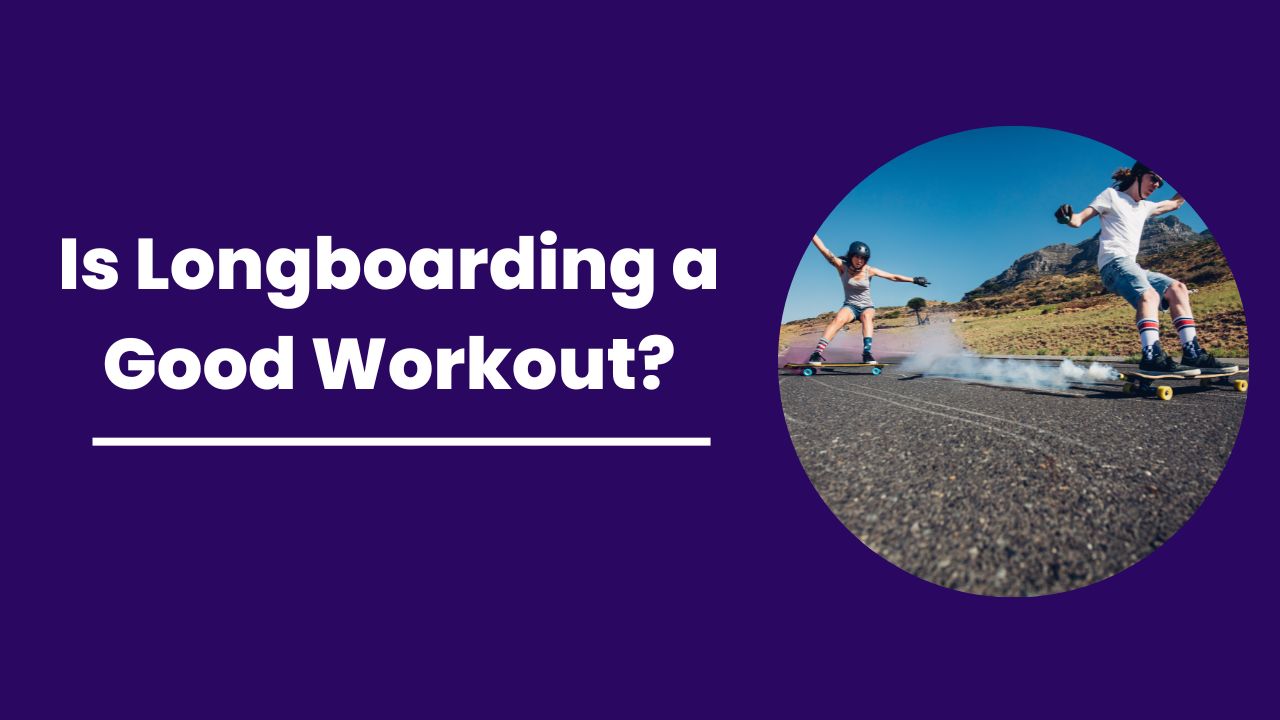A lot of beginner longboarders ask, “Are longboards supposed to bend?” And the answer is yes, but not too much, as it may cause an accident. If you want to know everything about it, then keep reading this article below.

Contents
Are Longboards Supposed To Bend?
Longboards, unlike other types of boards, have bending properties, which are also referred to as “flexing” (bending of the longboard in the middle). But it doesn’t bend too much, as longboards are supposed to be solid and stiff.
Flexing will give your longboard more stability and make it easier to grip. Your longboard is easier to control at very high speeds if it is flexible.
Also, there are a lot of types of flexing, and each has its benefits and drawbacks. Below are the types of flex.
1. Longitudinal flex
Curve or bend from the nose to the tail. As the midpoint of the deck pushes closer to the ground under force, more longitudinal flex is believed to dig deeper into carvings. More longitudinal flex will be seen in camber boards than in flat or rocker decks.
2. Lateral flex
The curve or bend that runs from left to right. Lateral flex can be influenced by combinations of camber/rocker and concave.
3. Torsional flex
The simultaneous longitudinal and lateral flexing during twisting. A board’s torsional flex is put to the test during hard carves and slides when a board with less torsional flex would be stiffer and return to the center more quickly.
But aside from that, a longboard can have different levels of flex, each of which has its benefits, which are discussed below.
4. Soft flex
This flex is best for shock absorption but is only viable at low speeds. At high speeds, longboards become unstable.
5. Medium-level flex
This offers more shock absorption and gives longboards a springy feel.
6. Stiff flex level
It provides stability. Especially at very high speeds, stiff longboards are generally more stable than flexible longboards.
So it is up to you to choose the flex level of your longboard according to your style.
2 Ways To Change The Flex Level Of Your Longboard
Now the question arises can you change the flex level of your longboard and make it more flexible or stiffer? And the answer is yes.
Below are the ways to change the level of flex of your longboard.
1. Adjustment of Turks
Typically, altering the trucks on your longboard will modify the flex. A board with softer trucks will bend more, whereas a board with firmer trucks will be stiffer. So you can choose if you want your longboard to show more flex or stiffness.
2. Changing the Material
But if you don’t want to alter your trucks, then there is also another way to change the flex. You can change your level of flex by utilizing lighter wheels or more sensitive deck materials.
A more flexible board is often produced by softer deck materials like bamboo, whereas heavier riders require a stiffer board.
Flex is influenced by spins as well; softer wheels offer more grip and facilitate turning, while harder wheels are better for speed and stability. But if it also not working for you then you should change your longboard.
Different Boards Have Different Flex
Finally, if you weigh more than average, you might require a board with additional flex.
You’ll find a variety, from mild to rigid, to suit the riding style you want to try. A cruisier configuration could have relatively mild flex to absorb more vibration and provide the rider with a smoother ride, but a downhill setup will need something stiff or with no flex to keep stable at speed.
Freeriders and carvers may need a deck with a little flex to start deep, smooth carvings, depending on their degree of comfort.
Depending on your weight, several companies provide different flex ratings for their boards, allowing you to select the ideal flex for your size.
For instance, you may utilize the recommended flex ranges to choose a deck that may be softer or stiffer if your weight is between 140 and 180 pounds.
Pros and cons of flex
Pros of a longboard flex
- A more flexible board might be more forgiving if you make a mistake and is frequently simpler to navigate.
- For stunts and complex riding, a flexible board might provide superior grip and traction.
- Because a flexible board will absorb vibrations better than a rigid one, it may be more comfortable to ride.
- A flex can give your longboard a bouncy or slinky feeling, which can put more energy into your pushes.
- A flexible longboard has much more shock absorption than a stiffer longboard.
- The grip is easier on a flexible longboard.
Cons of a longboard flex
- Flexible longboards will be worn out earlier than stiffer ones.
- Can cause an accident at a higher speed. Because flexible longboards are unstable at higher speeds.
- So, you can’t use it for downhill riding.
- Flexible longboards are somewhat difficult to control and ride.
Now you know about different types of flex, their advantages and disadvantages let us describe how to choose the best flex for you.
Best Flex Level For You According To The Riding Styles
The deck will have a certain flex when you select a style and shape of the board. There are occasionally several flex choices available to you. Your options will become more manageable once you understand the effects of flex.
Not every combination is possible, but it is still a good idea to be aware of what is available and what the flex implies for your ride.
Below is the different style of longboarding and the flex level you will need.
1. Freestyle
To preserve control of your board when carving, you don’t need a too soft board, since that can make your tricks and twists difficult to execute. For freestyle, you want a little amount of soft/medium board flex so you don’t feel every jump.
2. Freeriding
When freeriding, you want to go quickly, so choose a medium- or stiff-tough board that will provide more stability even at modest speeds.
3. Downhill Riding
When riding downhill, rigidity is necessary to prevent the board from wobbling when you exceed the speed limit and to maintain total control.
A downhill longboarder has only one objective in mind: to move as quickly as possible. When traveling at speeds beyond 80 mph, stability is crucial, therefore a stronger board will help. When you’re moving as quickly as a car, you don’t want a shaky board.
4. Cruising
Your performing style and the kind of flex your board should have are related. While you are cruising while using your longboard, cruising is also a sort of style you might use.
Since it’s the simplest, cruising is typically the first longboarding technique newbies learn.
Whether one is traveling a vast distance or just riding down the sidewalk, the demand for a delicate flex always holds. Your ride will be as comfortable as possible thanks to the superb shock absorption provided by a cruising board with gentle flex.
Additionally, cruising means that you will be moving slowly, which is ideal for a soft flex board.
Read More:
How Come Longboards Are Curved?
Similar to the rails of a shortboard, rounded rails are. They make flip tricks simpler and are resistant to damage from numerous aerial stunts without breaking or chipping off. Performance longboards, freeride boards, and downhill boards frequently have sharp rails.
How Well Do Longboards Turn?
Longboards will, of course, have a broader turning radius because of their wider trucks and longer deck. You will be able to lean in on your turns further, though, thanks to the noticeably improved stability.
A Longboard Could Be Flat Or Not?
Convex boards are unusual, although some slalom and downhill skateboarders enjoy the more comfortable foot positioning they offer. Except for reprinting old-school boards, concave-free skateboard decks are uncommon.
Flat decks may be seen on some longboards with cutouts and dropdowns.
Why Does My Longboard Sway While Moving Quickly?
A common reason can be loose or unhinged trucks. The excessive turning ability provided by loose trucks might make your setup hyper-responsive at any speed greater than 10 to 20 mph. If you’re traveling more quickly than that, you may want to tighten your trucks.
Can Longboarding Help With Muscular Development?
The answer is yes, longboarding can play a role in muscular development. Leg strength is essential for longboarding since there is a lot of pushing, twisting, kicking, and braking required. Longboarding strengthens your core and supports your abs while also enhancing your leg strength.

